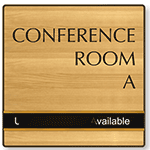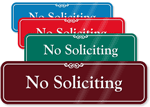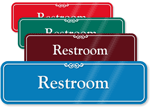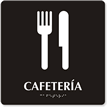“Lunch hour” becoming a misnomer in America
A report from MarketWatch declares the decline of the “lunch hour,” a phenomenon we all know to be true. But the report also highlights the new services that cater to the time-starved employees who want to do more with the limited time they have and are profiting from this trend.
Employees are forsaking their already truncated lunch breaks to run errands. From taking beauty services to visiting the dry cleaner, American employees are trading their squeezed lunch time for a myriad of chores.

It’s time to take back your lunch hour. From bradleypjohnson.
Honey, who shrunk the lunch hour?
In an OfficeTeam survey, 48 percent of respondents said their typical lunch break is 30 minutes or less. In fact, a 2006 study by the fast food chain KFC found that 60 percent of workers in corporate America actually considered the 60-minute lunch “the biggest myth of office life.” The KFC study also found that “more than half of American office workers multitask even during lunch by eating, running errands, shopping online and checking e-mail at the same time.” Another survey by office supply giant, Staples, revealed that 19 percent of employees don’t break for lunch at all.
Lunch hour gets a makeover
The lunchtime crunch isn’t bad news for everyone. Businesses are cashing in on the disappearing lunch hour culture, one particular beneficiary being the ‘salon’ and ‘spa’ industry. Many in this industry are pioneering the idea of “power hour,” during which customers receive beauty treatments (like manicures, pedicures, blowouts, and facials) while also getting a quick lunch during their appointment.
These lunchtime beauty sessions can cost customers up to around $150. Serenity Salon and Spa of Gettysburg, PA offers “Lunchtime Facials” in which guests get two cleansing, an exfoliation, skin analysis, customized treatment mask, arm and hand massage, and moisturizer all in 30 minutes for $45.
Food industry winners and losers
Along with the salon industry, another sector that’s thriving with the shrinking lunch hour is fast-casual restaurants that can provide a quick bite. Pressed for time, employees are ditching casual dining or fine-dining restaurants for popular fast-casual joints like Chipotle Mexican Grill, Zoe’s Kitchen, Panera Bread and the like — all of which have experienced good traffic growth in 2013. Technomic, a restaurant research firm has reported an 11 percent increase in fast-casual restaurant sales in 2013. Even Taco Bell is venturing into the segment with anew fast-casual restaurant called U.S. Taco Co. and Urban Tap Room.
The traditional sit-down restaurants seem to be losing ground with some reporting lunchtime sales declines of nearly 20 percent over the last few years. To keep pace with the lunch-on-the-go trend, many of these full-service restaurants are offering express lunch service. Reserve Cut, a steakhouse in New York, for instance has introduced a “$40@40” deal that allows customers to get a three-course midday meal for 40 bucks in a guaranteed 40 minutes. For those who are eating at their desks, restaurants have started lunchtime delivery service too.
But the new employees of corporate America, whether they’re taking lunch in haste or eating at their desks with eyes transfixed on computer screen, aren’t quite healthy and happy people. Not taking an hour lunch is not increasing their productivity. Long lunch breaks, in fact, make employees more productive, invigorated, energized, efficient, and happy. Skipping lunch might seem productive but actually burns you in the long run, says Nancy Rothbard, a professor of management at the Wharton School of business at the University of Pennsylvania.
Take back your lunch
Consulting firm The Energy Project counsels companies like Google, Coca Cola, Sony, and Pfizer on how to make their workforce more productive by channeling their energy. One of the first steps they take is introducing the “Take Back Your Lunch” program where they encourage employees to take a full hour lunch every day in order to be more productive, energized, and focused the rest of the day. Here are some facts about Sony – where the project was implemented – that speak for the effectiveness of the program:
- 93% of participants reported that as a result of the program, they began bringing higher levels of energy to work.
- 98% felt more focused and productive.
- In the midst of a severe recession and a dramatic industry-wide decline in DVD sales, Sony recorded one of its most profitable years ever in the fiscal year ending March 2009.
The endangered lunch hour can also be found fading away in countries besides America, thanks to dipping economy and soaring work expectations. Leisurely eaters like the French also don’t have time to enjoy their meals. Known for slowly eating their three-course, mid-day meal over an hour-and-a-half, the French are just managing to scarf down a sandwich during their 22-minute lunch breaks.
Category: New Products, Office courtesy
















